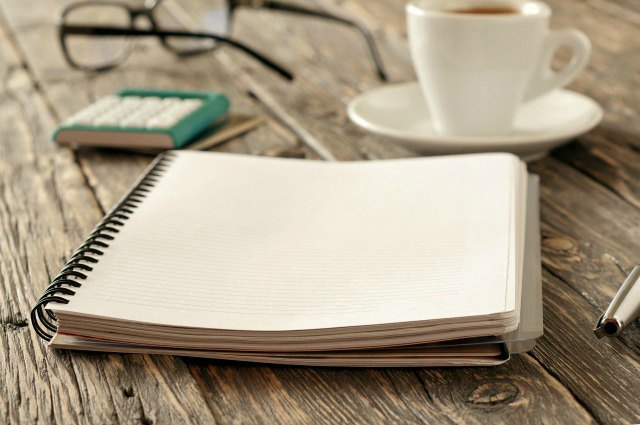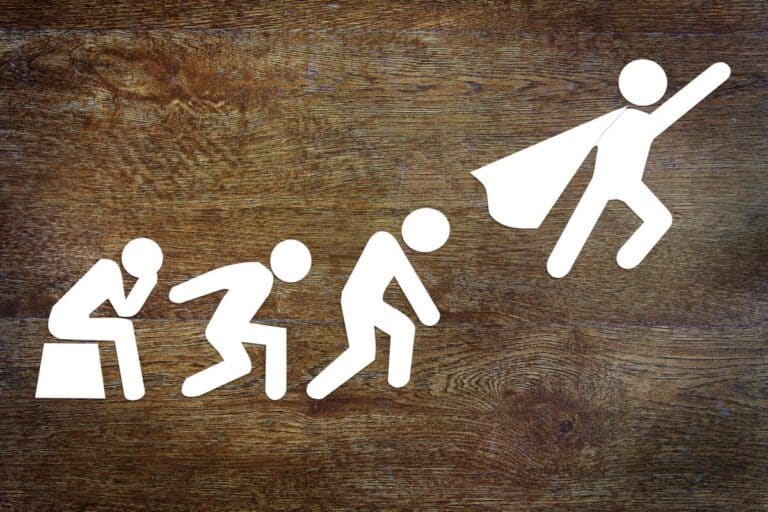A Four-Part Tiered Emergency Fund to Cover all Contingencies
This website may earn commissions from purchases made through links in this post.
A four-tiered approach to an emergency fund to cover immediate expenses as they arise while also building savings and assets.

There are all sorts of emergencies that we could face in our lifetime. From something as ‘small’ as a broken-down car to something as big as record flooding or a global pandemic.
An emergency fund doesn’t make everything better. But it does take some of the financial pressure off when emergencies occur and reduce the stress, even just a little bit.
This article addresses two specific challenges to building an emergency fund. The first is that different types of emergencies require different responses, and it helps if our emergency fund reflects this.
The second challenge is balancing the financial needs of today with potential future emergencies that may or may not happen. It’s all very well for experts to suggest we put aside six months worth of income, but that’s a LOT of money that’s hard to accumulate and could go towards something more tangible. Like a house deposit. Or rent and food.
The tiered approach below helps address these two problems.
Disclaimer: This is general information only and does not constitute financial advice. You should always check with a qualified professional when making financial decisions.
What is an Emergency Fund?
As a quick recap: an emergency fund is money squirrelled away specifically for an unexpected expense or hit to your finances.
These unexpected expenses could be the result of job loss, illness, or unexpected repairs to or replacement of critical possessions like your fridge, car or washing machine.
It’s not meant for covering everyday expenses, impulse buys or discretionary purchases.
How Much Emergency Fund Should I Have?
Let’s start with the standard advice. Experts advise saving anything from $1,000 to six months’ worth of expenses for your emergency fund.
$1,000 covers emergencies like car repairs. Six months’ worth of expenses cover emergencies like illness and job loss.
Everyone’s circumstances are different, so when deciding how much you want to save for your emergency fund, consider what emergencies you are aiming to cover, and how you might deal with larger emergencies like job loss with and without an emergency fund.
You can read more about saving for an emergency fund here.
Where to Keep Your Emergency Fund?
Again, we’re going to start with the standard advice here. That is to put your emergency fund in a readily accessible savings account so you can access your cash without any hassle.
A more nuanced approach is to have several parts or tiers to your emergency fund. I first read about the concept of a three-tiered approach to emergency funds on the Frugal Dad blog, and have adopted the idea by adding an extra tier that allows you to balance today’s expenses and tomorrow’s what-ifs.
1. Tier-One: A Stash of Cash Emergency Fund
We still need cash. Even with the move towards a cashless economy during the pandemic, cash is still necessary.
So it can be a good idea to keep a stash of cash at home for when you need it. Don’t believe in the importance of cash? Consider the following scenarios:
- You can’t get to the bank or ATM because of a natural disaster. Floods, fires, earthquakes, cyclones, snowstorms. We’ve seen them all in the last couple of years.
- There are widespread power outages or forced blackouts to save an overloaded grid. How will you buy ‘milk and bread’ if ATMs, EFTPOS machines and online ordering are not working?
- Your bank makes a mistake. The Nation Australia Bank computer ‘glitch’ left many customers without money for days. However, this kind of computer glitch happens to individuals all the time.
- The tradesman who has just fixed your broken hot water system only takes cash or offers you a significant cash-in-hand discount.
When the SHTF, it takes a little bit of stress out knowing you have some backup cash to cover emergency expenses.
Now, I’m not suggesting you stash thousands of dollars around your home, hidden in jars, or under the mattress.
But a small amount, set aside somewhere safe, well hidden but easily accessible to you, can be a good backup. If you’re in an area prone to natural disasters, you might keep your cash in a sealable plastic bag in your bug-out bag.
2. Tier-Two: Ready Access Emergency Fund
The next level of your emergency fund is the standard cash saved in an everyday bank account. It helps to have easy access when needed but is separate from the everyday bank account for household expenses. That way we’re not tempted to dip into your fund.
The standard advice is to keep $1,000 in this account, but obviously, the amount saved will depend on circumstances.
The reason for using an everyday account as opposed to a high-interest account is accessibility. Often high-interest accounts are internet-only, or you have to transfer funds to access them, or they don’t come with an EFTPOS card. If you don’t have access to internet banking for any reason, you won’t have access to your funds when you need them.
3. Tier-Three: An Emergency Fund That is Working For You
The third level of the tiered emergency fund is money saved in a high-interest bank account or other financial vehicles that are earning you money but can be quickly accessed or liquidated.
This level of your emergency fund is where accessibility takes a small step backward to allow you to earn some income on your savings rather than have them earn nothing.
Tiers one and two have one role only – be available when you need. Cash in a high-interest account has two roles: be available and also earn extra money.
How much is saved will depend on circumstance. Again, the ‘standard’ advice is to save 6 months’ worth of expenses, but that’s a lot of money to have sitting around, which is a luxury few of us can afford, so we each need to work out what work given our circumstances.
4. Tier-Four: Advanced Emergency Fund
There are other ways we can deal with emergencies above and beyond cash savings.
The first is insurance.
Having adequate insurance helps cover emergencies. Insurance you might consider includes car insurance, home and contents insurance, income protection insurance, disability insurance, life insurance, and health insurance.
Some of these insurances might be part of your superannuation fund. It’s important to talk to a qualified financial advisor to work out what insurances are right for you and your circumstances.
If you have a mortgage, making extra mortgage repayments can be a way to build an emergency buffer.
These extra repayments not only save you interest but they can also be redrawn to cover expenses in an emergency (if you have this facility). Depending on your bank, you may also be able to use additional repayments to put future repayments on hold for a period of time during an emergency.
Assets that can be sold are another way of finding extra cash during an emergency. Things you could sell include clutter lying around, your furniture, or your car to cover emergencies.
Access to a line of credit in the form of a loan or credit card can also help cover emergencies. Getting into debt in an emergency is not ideal, but it is an available option.
If you have income from Centrelink or are on a low income, you might qualify for the government’s No Interest Loan Scheme, which can help you out without the burden of interest.
Finally, your superannuation can be used in an emergency. Under very specific circumstances, you can apply to access part of your superannuation to help meet costs. You will need to speak to your superannuation provider about eligibility and fees.
Not all money saved for emergencies needs to be in a savings account. It’s can be helpful to have some cash on hand, as well as some savings working for you.







I hear sometimes from people “where am I going to find $1000 to save to get started”. Sell some things!!! So many of us have too much junk. I like the idea, something must die (sold) for something new to be birthed (savings balance).